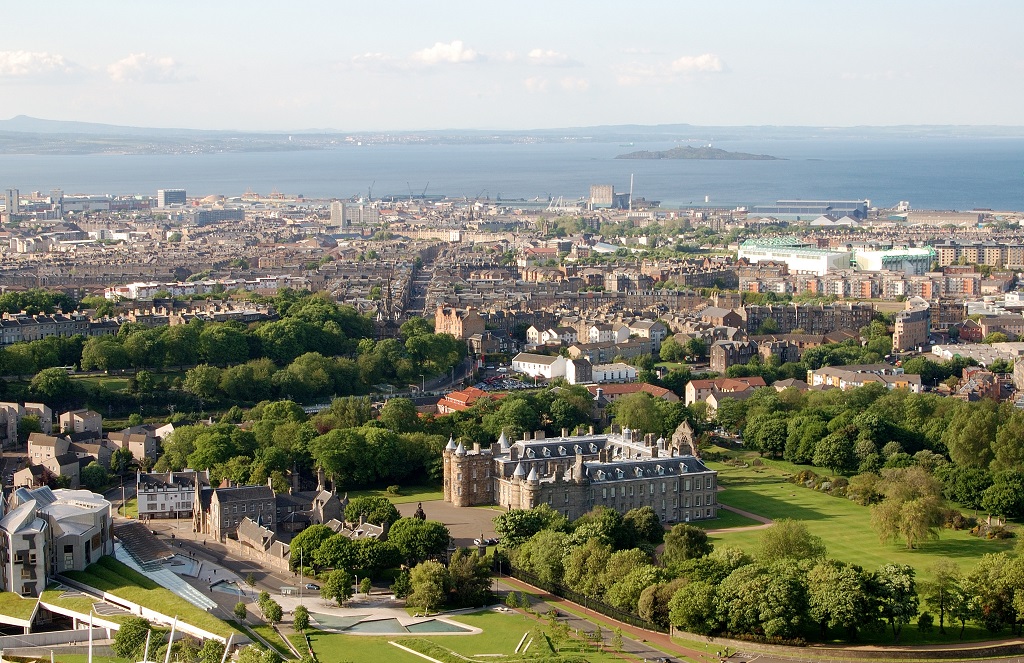
A love affair that has lasted over 500 years
The origins of the Palace of Holyroodhouse lie in the religious, or monastic, setting of the Holy Rood, which is said to have been a fragment of the cross of Jesus Christ which found its way from the Holy Land to Edinburgh.
There is also the tale of David I of Scotland (1124-1153) having a vision of a stag at bay with a cross, or ‘rood’, surrounded by its antlers.
Whatever the truth of these stories, King David resolved to build a monastery in the deer park, in accordance with a dream consisting of voices telling him to: ‘Make a house for Canons devoted to the Cross.’ So, in 1128, the monastery of the Holy Rood was built with an Augustinian abbey alongside.
In time, the lodgings around the abbey increased to accommodate ever-increasing numbers of people.

The Palace of Holyrood has been an important part of Edinburgh for over 500 years
When Edinburgh became the capital of Scotland in the 15th century, kings preferred the ambience of the abbey and park to the austere atmosphere of the castle on the hill. And so began its long royal association that has lasted for more than 500 years.
The house and abbey were the settings for various royal marriages and coronations. It was James IV who converted the ‘house’ into a palace and so the title ‘the Palace of Holyroodhouse’ was born, bringing a magisterial resonance.
He did this in honour of his new wife Margaret Tudor, daughter of Henry VII, and because he had decided that Edinburgh should be the capital.
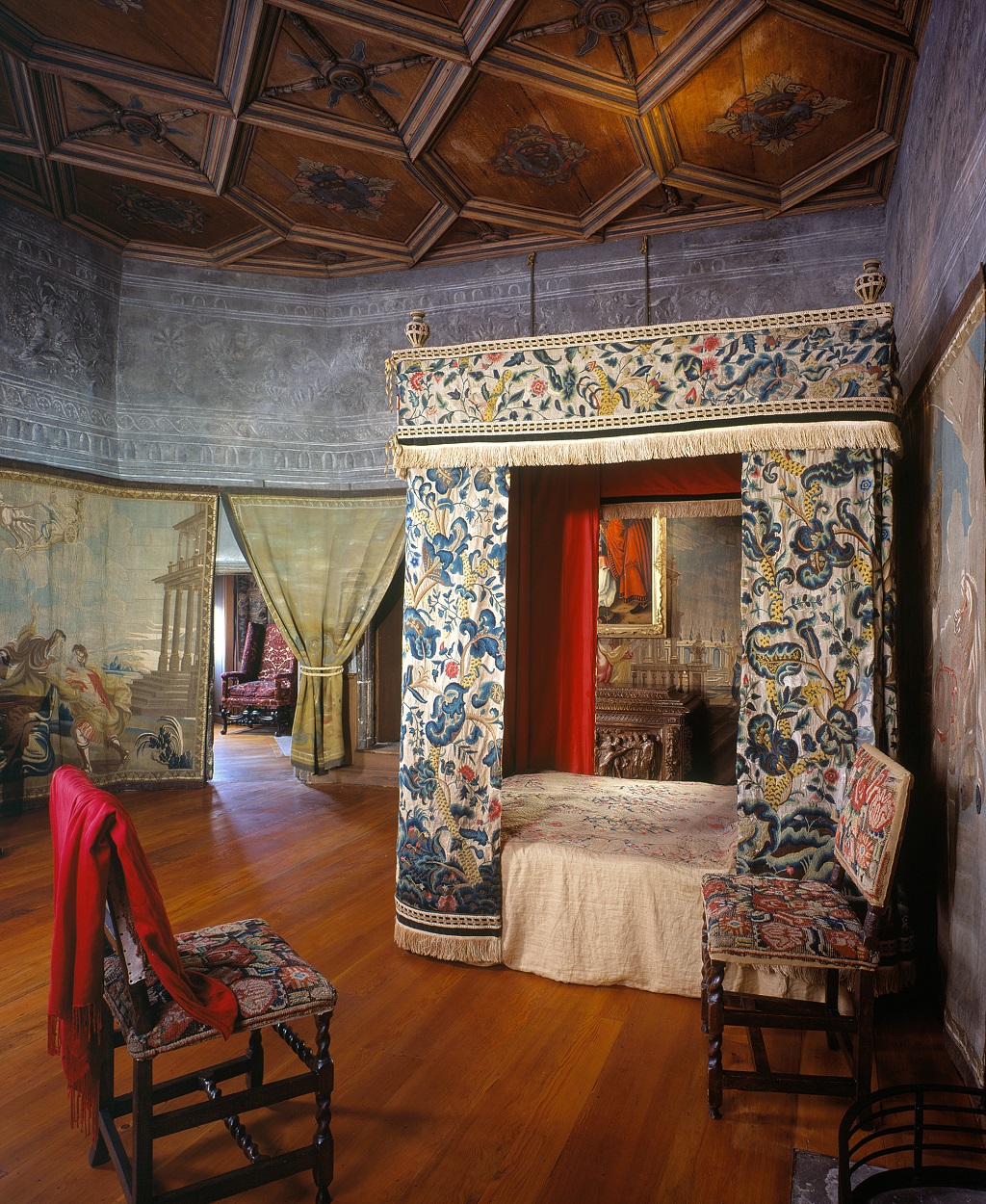
The Mary Queen of Scots bedroom at the Palace of Holyroodhouse
James IV had grand ideas for the palace, but these were obliterated along with him and his nobles at the battle of Flodden in 1513. Thereafter, the palace lay undeveloped until the Restoration of Charles II in 1660. In the intervening period, Holyrood became closely associated with the business of monarchy, of which the most romantic, and indeed tragic, was Mary, Queen of Scots.
After returning to Scotland as the 18-year-old widow of Francis II, King of France, she fell passionately in love with her cousin Henry Stuart, Lord Darnley, marrying him at Holyrood in 1565. They shared the same grandmother – Margaret Tudor – but unfortunately for Queen Mary and her advisers, Darnley was a petulant and deeply flawed character.
Mary’s stalwart was the increasingly influential David Rizzio, her Piedmontese secretary. Darnley had Rizzio murdered in the Queen’s apartments as she sat down to supper with him, implanting his personal dagger into his rib cage as a warning sign.
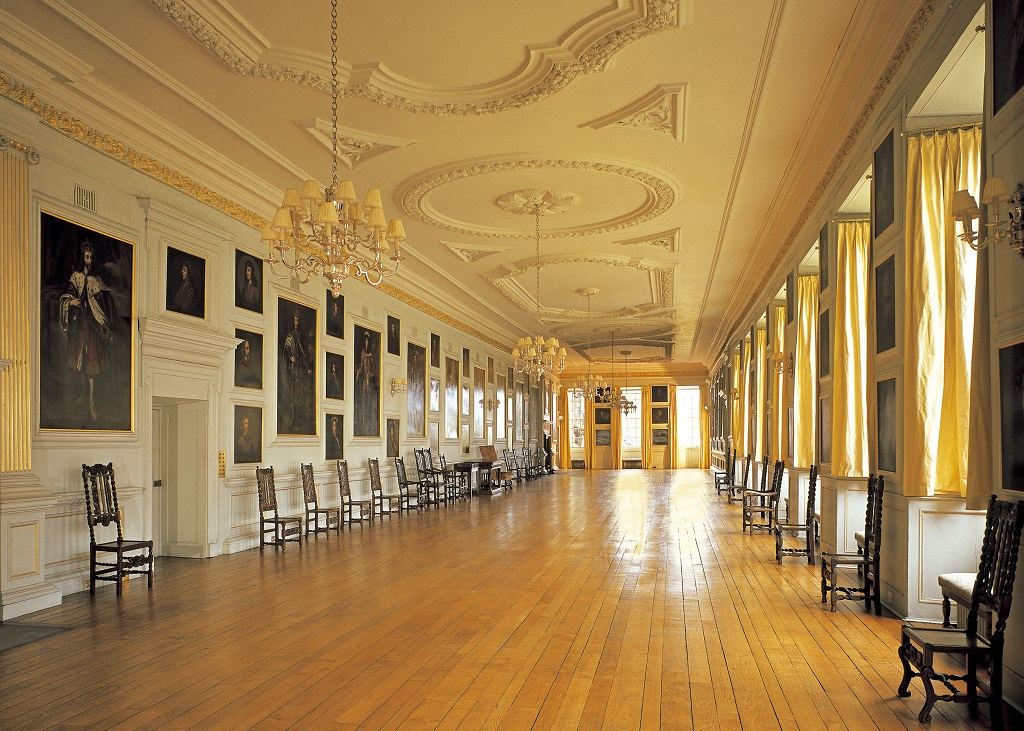
The beautiful picture gallery at Holyrood
Darnley himself was strangled whilst escaping from an explosion that had destroyed the Kirk o’ Field, an old church just outside Edinburgh, now the site of the University quadrangle. Their son, James VI, became King when Mary married James Hepburn, Earl of Bothwell, in 1567, and she was forced to abdicate.
Bothwell was heavily implicated in the death of Darnley, with the marriage being condemned by the Scottish nobility. She was imprisoned at Loch Leven Castle but escaped and fled to England, hoping to seek sanctuary with her cousin Elizabeth I. But the wily Queen regarded Mary as a focus for Catholic plots in Protestant England, and eventually ordered her execution at Fotheringay Castle.
James VI married Anne of Denmark in 1590 at Holyrood, making her Queen, and established his court with some 600 people. There were then some improvements to the gardens and the palace, but he departed in haste for London in 1603 on the death of Elizabeth I, thus uniting the crowns of Scotland and England. Aside from a few weeks in 1617, he never returned. The palace lost its importance and the royal centre of gravity now lay in London.
Nonetheless, the palace and abbey were refurbished for the Scottish coronation of Charles I in 1633. He visited once again in 1641, by which time civil war had erupted in Scotland over the signing of the National Covenant. His son, Charles II, was crowned at Scone in 1651, but he never returned to Scotland after the Restoration in 1660. He did, however, take considerable interest in the palace, instructing Sir William Bruce of Kinross to rebuild it in a Palladian style.
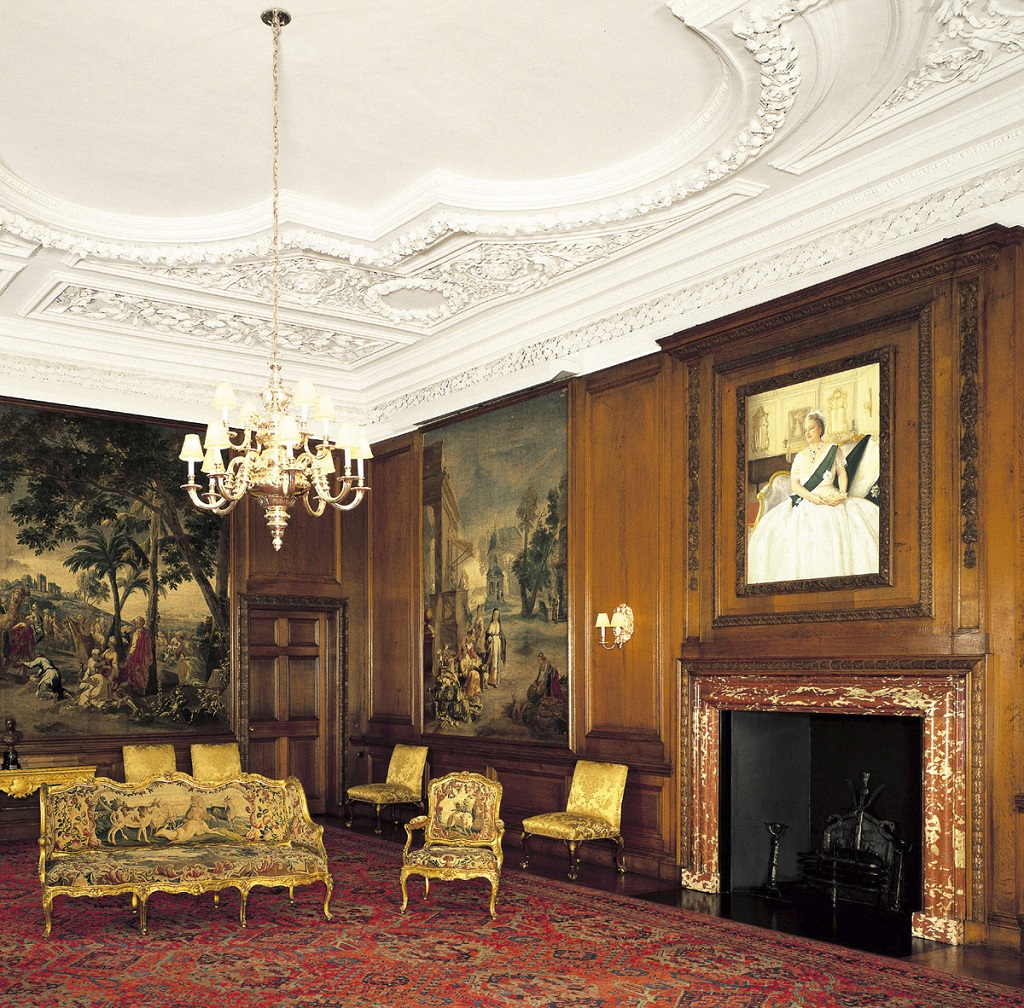
Inside the evening drawing room
The classic layout of the inner quadrangle introduced Doric, Ionic and Corinthian designs to Scottish architecture. These new aspects and design were appreciated by the King’s brother, the Duke of Albany, who later became James VII and II, on various visits.
From about 1685, the palace was mainly occupied by the Hereditary Keepers, the Dukes of Hamilton.
Holyrood sprang to life again with the arrival of Prince Charles Edward Stuart at the head of the 1745 uprising. He established his court at Holyrood and entertained lavishly. A great ball was held in the Picture Gallery, in which portraits of 111 Scottish kings, both mythical and real, painted by Dutch artist Jacob de Witt, looked down on the revellers.
The Stuart dynasty had embarked on its great revival, but the gamble was to prove a failure as the last and greatest of the Jacobite uprisings came to a bloody end at the Battle of Culloden in 1746.
For the next 60 years, the Highlanders kept a low profile, until, in 1822, King George IV visited the capital at the behest of Sir Walter Scott. Although the King stayed outside the city at Dalkeith Palace, Holyrood featured in many of the ceremonial aspects of the visit.
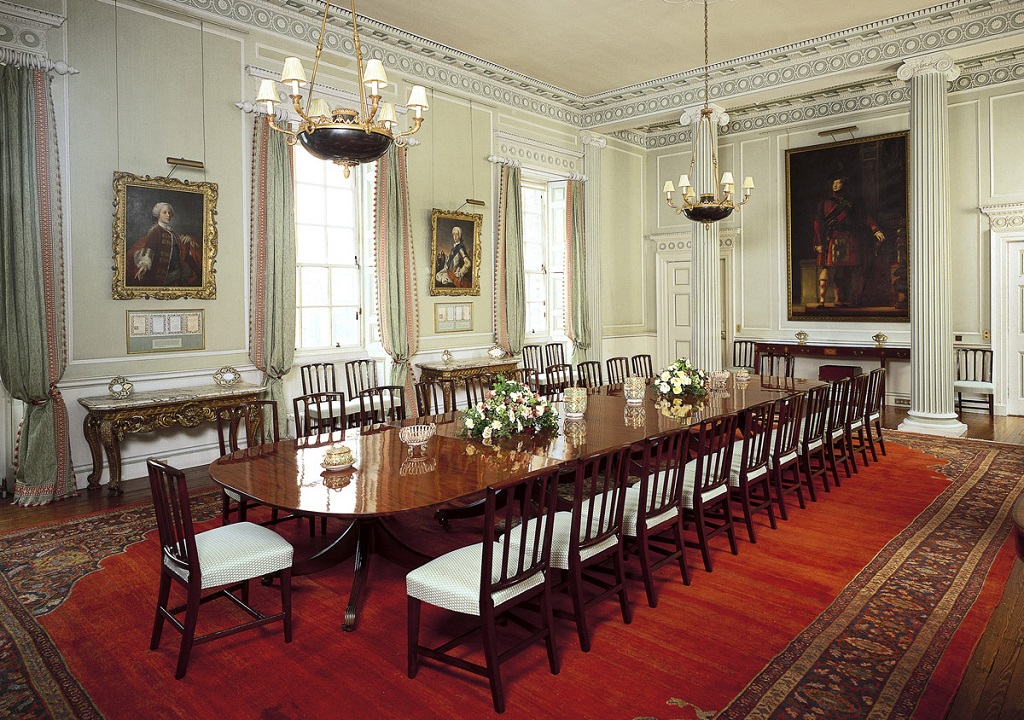
The exquisite dining room
King George’s visit kindled an interest in Holyroodhouse Palace among his descendants, most notably Queen Victoria and the present Queen Elizabeth.
Holyrood has been restored to its former glory and is now the official residence of the Queen on her annual visits to Edinburgh.
For brief spells, the magnificent rooms are opened up and the palace becomes a hive of activity. The forecourt is used for Guards of Honour, with the kilted soldiers of the Royal Regiment of Scotland guarding the entrance.
And the palace gardens play host to the annual Royal Garden Party at which The Royal Company of Archers, which was established by George IV in 1822 and has since acted as the sovereign’s personal bodyguard while in Scotland, stands guard.
The palace has been through a fascinating and turbulent history – some of it murderous – mirroring Scottish history generally.
But its renovation by Sir William Bruce, and its religious links to the Holy Rood, give it a lasting and evocative feel. It remains one of the grandest of royal residences to be found anywhere in the world.
TAGS

